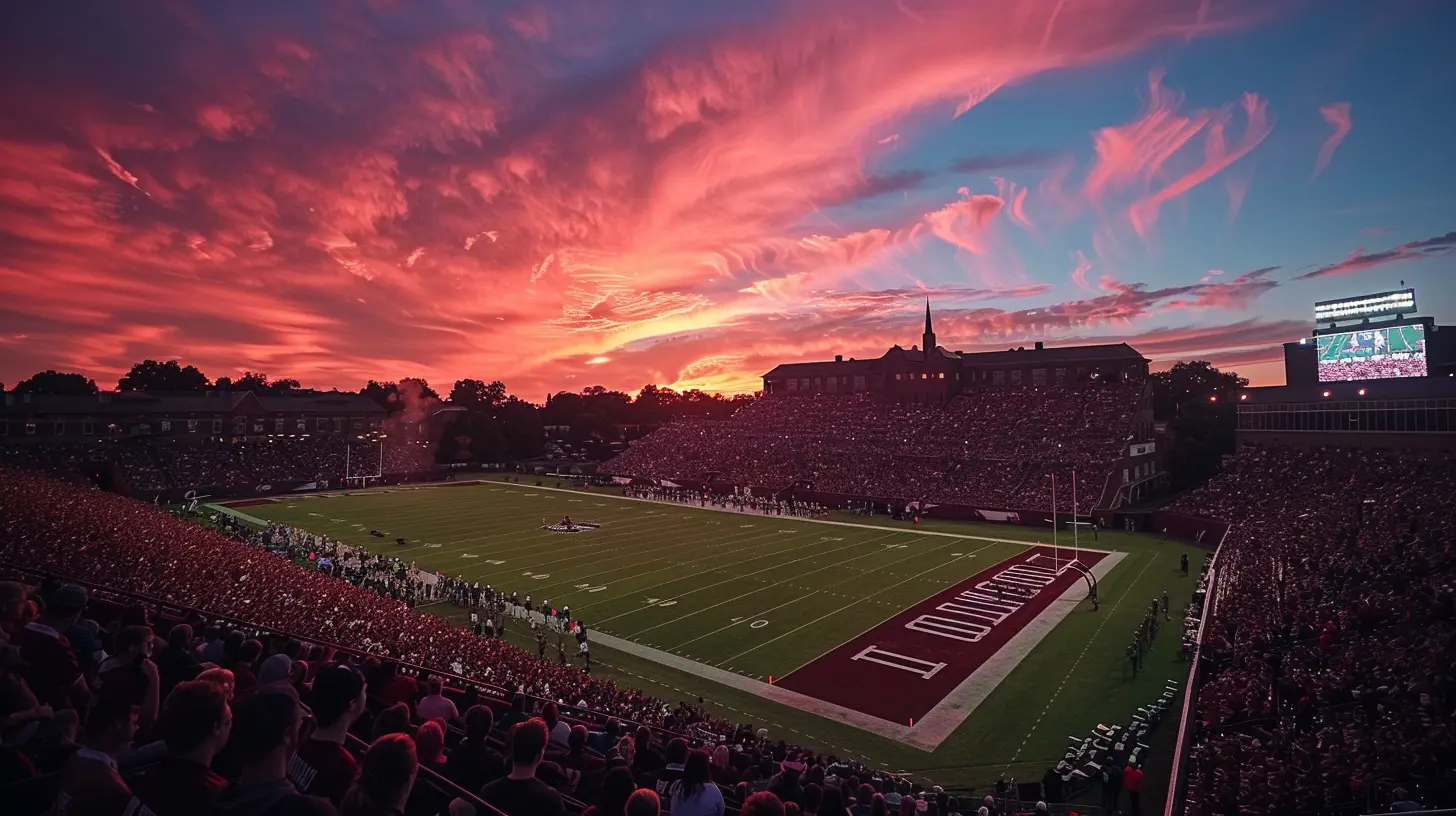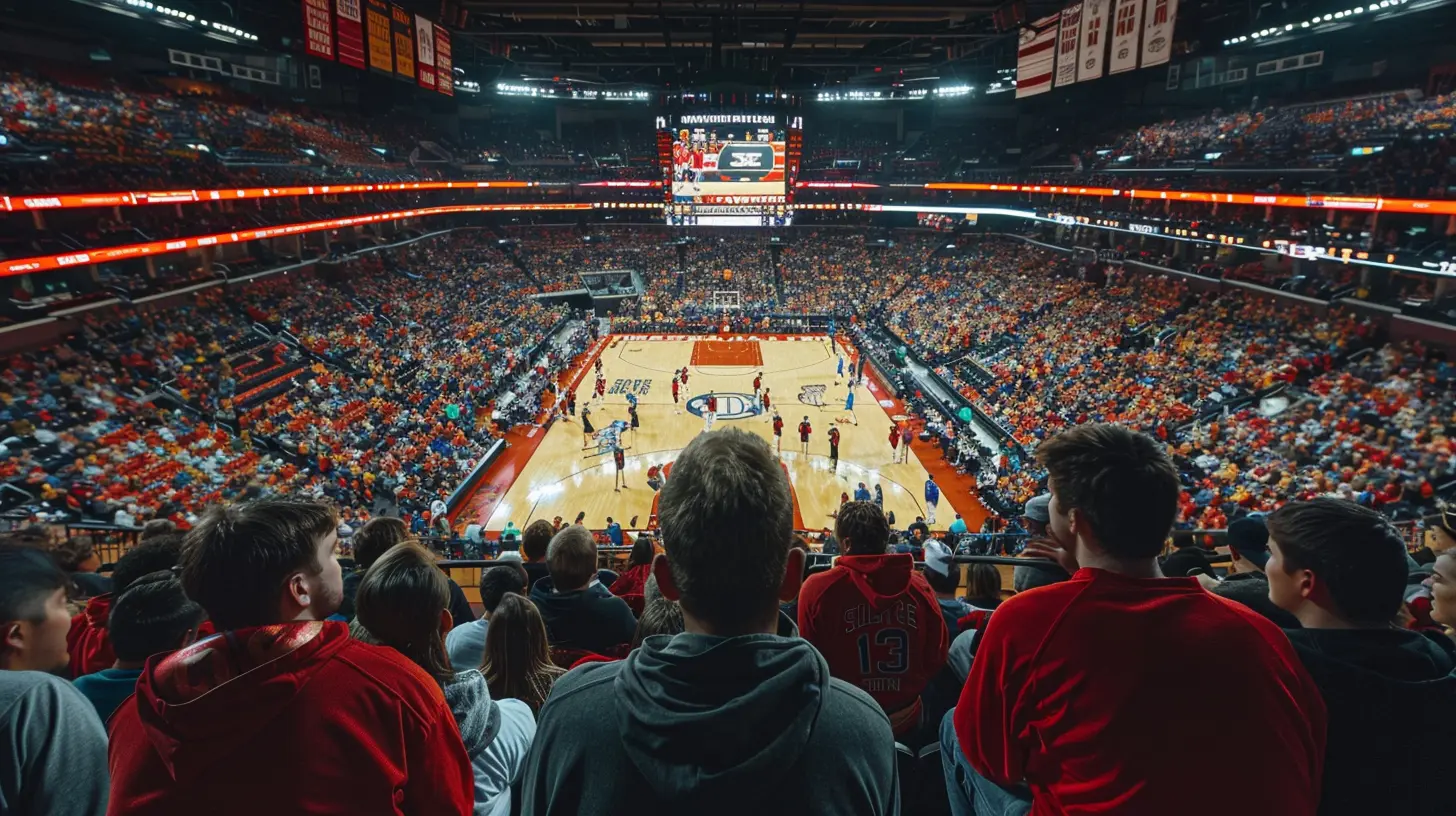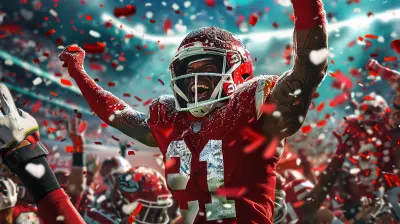What Makes a Successful College Sports Program?
13 June 2025
When you think of college sports, what comes to mind? Maybe you picture stadiums packed with screaming fans, a marching band playing the fight song, or athletes proudly wearing their school colors. But behind all the excitement, what really makes a college sports program successful? Is it just about winning championships, or is there more to the equation?
In this article, we're going to break down the key ingredients that contribute to a winning college sports program. Spoiler alert: it's not just about having talented athletes! From building a strong culture to investing in facilities, there's a lot more that goes into creating a program that stands the test of time.
So, whether you're a sports fan, a student-athlete, or someone who's just curious about what goes on behind the scenes, let's dive in!

1. Strong Leadership: The Backbone of Success
Any great team starts with great leadership. College sports programs are no exception. A successful program relies heavily on the leadership of athletic directors, head coaches, and their staff.Think of the athletic director as the CEO of the sports program. They manage everything from budgets to hiring coaches and ensuring compliance with NCAA regulations. A good athletic director knows how to balance the needs of the athletes, coaches, and the university — not an easy task!
And then there’s the head coach. They’re not just responsible for Xs and Os; they’re also mentors, motivators, and sometimes even parental figures. A coach who knows how to develop talent, foster a sense of team unity, and create a winning culture is invaluable.
How Does Leadership Impact Success?
Imagine a ship without a captain — it’s bound to drift aimlessly, right? Similarly, a sports program without strong leadership will struggle to stay on course. Leaders set the tone for everything from recruiting to game-day preparation.Great coaches and directors inspire trust and loyalty, not just from their athletes but from the whole community. When a coach genuinely cares about their players’ personal and academic development, it builds a culture of respect and accountability.

2. Recruiting: Finding the Right Talent
You can’t win games without talented athletes. Period. But it's not just about finding the best player on paper. Successful programs recruit athletes who fit into the team culture and align with the program’s long-term goals.Recruiting is like putting together a puzzle. Sure, you want the most talented pieces, but they also need to fit together to create a cohesive picture. Coaches look for players who have not only the physical skills but also the mental toughness and work ethic to succeed at the college level.
What Makes a Recruit Stand Out?
Coaches look for more than just stats on a piece of paper. They’re paying attention to how the athlete interacts with teammates, how they handle adversity, and whether they’re coachable. A recruit with a bad attitude or poor work ethic can disrupt team chemistry, even if they’re a star player.And don’t forget about academics! A successful program prioritizes student-athletes who can handle the academic rigors of college while also performing on the field, court, or track.

3. Facilities and Resources: More Than Just Fancy Gyms
While talent and leadership are critical, facilities can’t be overlooked. Top-notch facilities don’t just impress recruits — they also provide athletes with the tools they need to succeed.We're talking about more than just a flashy locker room or a cool stadium. Think strength and conditioning rooms, medical and rehabilitation centers, and academic support facilities. These resources help athletes recover from injuries, stay in top shape, and balance their schoolwork with their athletic commitments.
The Role of Facilities in Long-Term Success
Can a program succeed without state-of-the-art facilities? Sure, but it’s a lot harder! Facilities are a reflection of the university’s investment in its athletes. When a school provides the resources athletes need to succeed on and off the field, it shows that the administration values the sports program.Plus, let’s be honest — top recruits often choose schools with the best facilities. It’s like picking between two cars: if one has all the bells and whistles while the other is a clunker, which one are you going to choose?

4. Academic Support: Balancing the Books and the Ball
College athletes have a lot on their plate. Between practices, games, and travel, it’s tough to stay on top of schoolwork. That’s where academic support services come in.Successful programs understand that their athletes are students first. After all, very few college athletes go on to play professionally, so they need to leave college with a solid education. Many schools offer tutoring, study halls, and academic advisors who specialize in working with athletes.
Why Is Academic Support So Important?
Let’s face it: college sports aren’t just about sports. The NCAA has strict academic standards that athletes must meet to remain eligible to play. If a player falls behind in school, they could be benched or, worse, lose their scholarship.By offering academic resources, programs not only keep their athletes eligible but also set them up for success after college. This commitment to education enhances the program’s reputation and helps attract recruits who value life after sports.
5. Team Culture: Building a Winning Mentality
You can have the best athletes in the world, but if they don’t work together, they won’t win. This is where team culture comes into play. A successful program fosters a positive, inclusive, and hard-working environment.Team culture is about more than just winning games. It's about how the athletes treat each other, how they handle adversity, and how they represent the school. When players buy into a shared vision, they are more likely to push themselves and each other to be the best they can be.
What Defines a Strong Team Culture?
A strong team culture is often driven by the head coach, but it’s lived out by every player. It’s about accountability, trust, and shared goals. Teams with a great culture are like a family — they look out for one another, celebrate each other’s successes, and work together to overcome challenges.On the flip side, a toxic culture can destroy a program. Infighting, lack of discipline, and poor leadership can lead to a downward spiral that’s hard to recover from.
6. Community Support: The 12th Man
Let’s not forget about the fans! The support of the student body, alumni, and the local community can make a huge difference. A packed stadium or arena creates an electric atmosphere that can energize athletes and intimidate opponents.But community support goes beyond just showing up on game day. Successful programs engage with their fans year-round through outreach initiatives, fundraising events, and even social media. A strong connection with the community builds loyalty, which can be a massive advantage when it comes to recruiting and fundraising.
How Does Community Support Impact a Program?
Think of community support as the wind beneath the program’s wings. When fans are invested in the team, it creates a ripple effect. Alumni are more likely to donate, recruits are more likely to commit, and the media is more likely to cover the team.It’s a win-win for everyone involved, and it builds a sense of pride that extends beyond the athletes and coaches.
7. Financial Investment: Money Matters
Let’s not sugarcoat it — money plays a significant role in the success of a college sports program. From funding scholarships to maintaining facilities, it all requires a substantial financial investment.Programs with larger budgets can afford to hire top-notch coaches, provide better resources for their athletes, and travel to compete against the best teams in the country. Plus, they can offer more scholarships, which helps attract top talent.
Does Money Guarantee Success?
Not necessarily. While money can help, it’s not a guarantee of success. Plenty of programs with big budgets have struggled, while smaller programs have thrived thanks to strong leadership, team culture, and smart recruiting.That said, it’s hard to deny that financial investment gives a program an edge. Schools with deep pockets can afford to take risks and invest in the long-term growth of their sports programs.
8. Longevity and Tradition: Building a Legacy
Finally, successful programs build a legacy that stands the test of time. Think about schools like Alabama in football or Duke in basketball. Their success didn’t happen overnight — it’s the result of years of hard work, dedication, and tradition.Programs with a rich history have an advantage because they’ve already established a winning culture. Alumni and former players are more likely to stay involved, and recruits are often drawn to schools with a storied past.
How Do You Build a Legacy?
Building a legacy takes time, patience, and consistency. It starts with doing the little things right — from recruiting to coaching to community engagement. Over time, these small efforts accumulate into something much bigger.Tradition also plays a role. Whether it’s a pre-game ritual, a special chant, or a trophy that’s been passed down for generations, these traditions create a sense of continuity that binds the past, present, and future.
Conclusion: The Winning Formula
So, what makes a successful college sports program? It’s not just one thing — it’s a combination of factors working together in harmony. Strong leadership, smart recruiting, top-notch facilities, academic support, team culture, community involvement, financial investment, and a commitment to building a legacy all play a role.When you put it all together, you get a program that doesn’t just win games but also shapes the lives of the athletes and leaves a lasting impact on the community. Now that’s what I call a victory.
all images in this post were generated using AI tools
Category:
College SportsAuthor:

Everett Davis
Discussion
rate this article
3 comments
Zinna Foster
A successful college sports program thrives on a balanced synergy between robust coaching, strong recruitment, academic support, and community engagement. Ultimately, fostering a culture of resilience and collaboration among athletes not only enhances performance but also shapes well-rounded individuals who can excel beyond the field.
June 23, 2025 at 3:20 AM

Everett Davis
Thank you for your insightful comment! I completely agree that a balanced synergy among coaching, recruitment, academic support, and community engagement is essential for developing not just successful athletes, but well-rounded individuals.
Lauren McKay
A successful college sports program thrives on strong leadership, athlete development, community support, and a winning culture, fostering both academic and athletic excellence for lasting impact.
June 17, 2025 at 11:15 AM

Everett Davis
Absolutely! Strong leadership and community support are essential for developing athletes and cultivating a winning culture, ultimately ensuring both academic and athletic success.
Kova Long
Great insights! Building strong community support and investing in athlete development are key for success.
June 15, 2025 at 11:05 AM

Everett Davis
Thank you! I completely agree—community support and athlete development are vital for a thriving college sports program.



